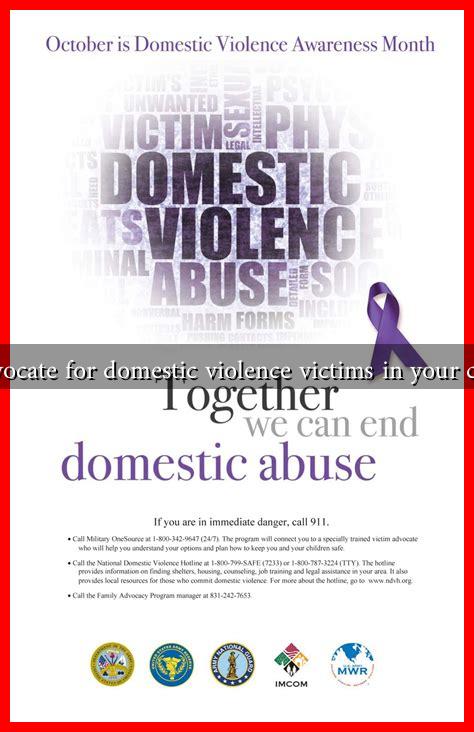-
Table of Contents
How to Advocate for Domestic Violence Victims in Your Community
Domestic violence is a pervasive issue that affects millions of individuals and families across the globe. According to the World Health Organization, approximately 1 in 3 women and 1 in 4 men have experienced physical violence from an intimate partner. Advocating for victims of domestic violence in your community is crucial for raising awareness, providing support, and fostering a culture of safety and respect. This article outlines effective strategies for advocacy, highlighting the importance of community involvement and support systems.
Understanding Domestic Violence
Before advocating for victims, it is essential to understand what domestic violence entails. Domestic violence can manifest in various forms, including:
- Physical abuse
- Emotional and psychological abuse
- Financial control
- Sexual abuse
Recognizing these forms of abuse is vital for effective advocacy. Victims often face barriers to seeking help, including fear, shame, and lack of resources. Understanding these challenges can help advocates provide better support.
Educate Yourself and Others
Education is a powerful tool in advocacy. By informing yourself and your community about domestic violence, you can help dispel myths and reduce stigma. Here are some ways to educate yourself and others:
- Attend workshops and training sessions on domestic violence.
- Read books and articles from reputable sources.
- Engage with local organizations that specialize in domestic violence support.
- Share information on social media platforms to raise awareness.
For instance, organizations like the National Domestic Violence Hotline provide resources and training for advocates. Their website offers a wealth of information on how to support victims effectively.
Support Local Organizations
Many communities have organizations dedicated to supporting domestic violence victims. Supporting these organizations can amplify your advocacy efforts. Here are some ways to get involved:
- Volunteer your time to help with outreach programs.
- Donate money or resources to shelters and support services.
- Participate in fundraising events to raise awareness and funds.
- Collaborate with local organizations to host community events.
For example, the YWCA is a national organization that provides services to domestic violence victims. Partnering with such organizations can enhance your advocacy efforts and provide victims with the resources they need.
Raise Awareness in Your Community
Awareness is key to creating a supportive environment for domestic violence victims. Here are some strategies to raise awareness:
- Organize community events, such as workshops or seminars, to discuss domestic violence.
- Distribute informational pamphlets in public spaces, such as libraries and community centers.
- Utilize social media campaigns to reach a broader audience.
- Engage local media to cover stories related to domestic violence and available resources.
For instance, during Domestic Violence Awareness Month in October, many communities host events to educate the public and provide resources for victims.
Advocate for Policy Changes
Advocacy also involves pushing for policy changes that protect victims and hold abusers accountable. Here are some steps you can take:
- Research local laws and policies related to domestic violence.
- Engage with local lawmakers to discuss necessary changes.
- Join or form coalitions that focus on domestic violence advocacy.
- Encourage community members to participate in advocacy efforts.
For example, advocating for stronger restraining order laws can provide victims with better protection from their abusers.
Conclusion
Advocating for domestic violence victims in your community is a vital endeavor that requires education, support, awareness, and policy change. By understanding the complexities of domestic violence, educating yourself and others, supporting local organizations, raising awareness, and advocating for policy changes, you can make a significant impact. Remember, every effort counts, and together, we can create a safer environment for all individuals affected by domestic violence. For more information and resources, visit the [National Domestic Violence Hotline](https://www.thehotline.org).

